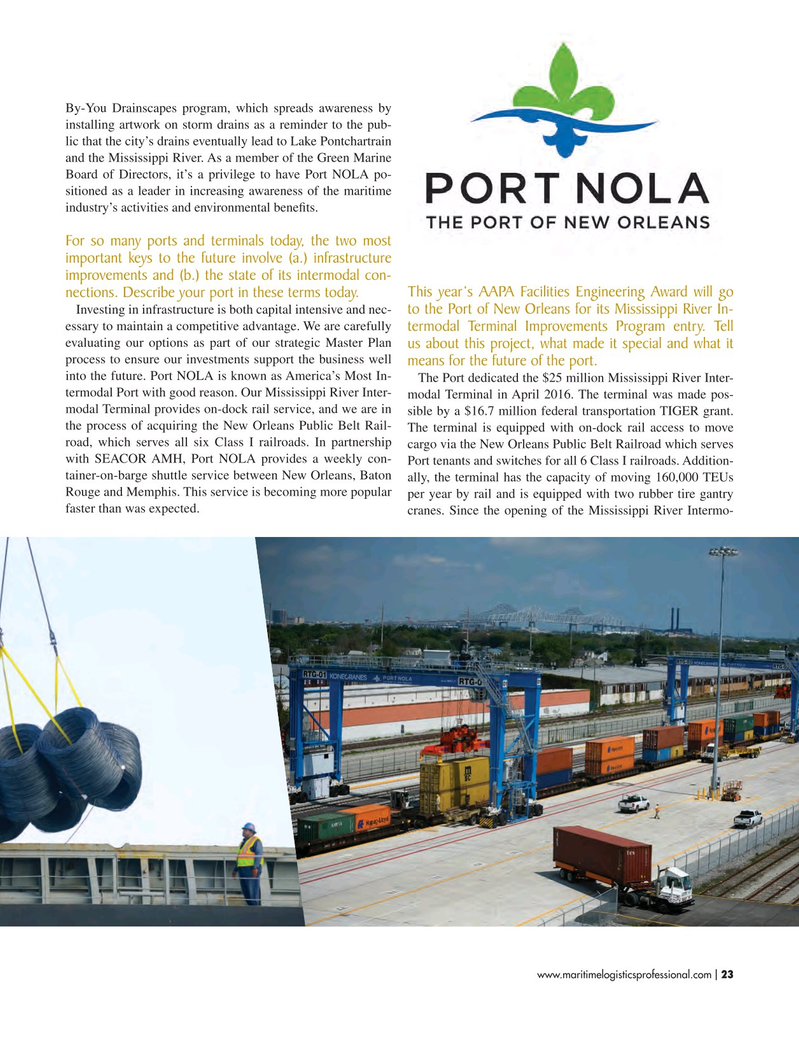
Page 23: of Maritime Logistics Professional Magazine (Sep/Oct 2017)
CONTAINER PORTS
Read this page in Pdf, Flash or Html5 edition of Sep/Oct 2017 Maritime Logistics Professional Magazine
By-You Drainscapes program, which spreads awareness by installing artwork on storm drains as a reminder to the pub- lic that the city’s drains eventually lead to Lake Pontchartrain and the Mississippi River. As a member of the Green Marine
Board of Directors, it’s a privilege to have Port NOLA po- sitioned as a leader in increasing awareness of the maritime industry’s activities and environmental benefts.
For so many ports and terminals today, the two most important keys to the future involve (a.) infrastructure improvements and (b.) the state of its intermodal con- nections. Describe your port in these terms today. This year’s AAPA Facilities Engineering Award will go to the Port of New Orleans for its Mississippi River In-
Investing in infrastructure is both capital intensive and nec- essary to maintain a competitive advantage. We are carefully termodal Terminal Improvements Program entry. Tell evaluating our options as part of our strategic Master Plan us about this project, what made it special and what it process to ensure our investments support the business well means for the future of the port.
into the future. Port NOLA is known as America’s Most In-
The Port dedicated the $25 million Mississippi River Inter- termodal Port with good reason. Our Mississippi River Inter- modal Terminal in April 2016. The terminal was made pos- modal Terminal provides on-dock rail service, and we are in sible by a $16.7 million federal transportation TIGER grant. the process of acquiring the New Orleans Public Belt Rail-
The terminal is equipped with on-dock rail access to move road, which serves all six Class I railroads. In partnership cargo via the New Orleans Public Belt Railroad which serves with SEACOR AMH, Port NOLA provides a weekly con-
Port tenants and switches for all 6 Class I railroads. Addition- tainer-on-barge shuttle service between New Orleans, Baton ally, the terminal has the capacity of moving 160,000 TEUs
Rouge and Memphis. This service is becoming more popular per year by rail and is equipped with two rubber tire gantry faster than was expected.
cranes. Since the opening of the Mississippi River Intermo- www.maritimelogisticsprofessional.com 23
I

 22
22

 24
24
